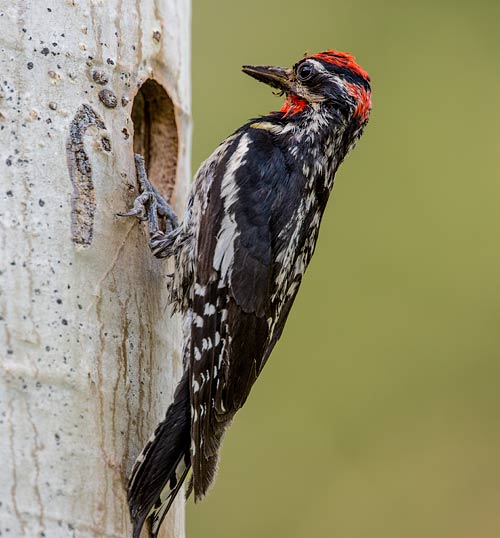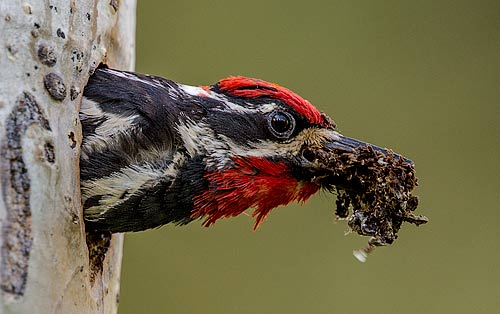Photo Gallery and Blog 2022
Bald Eagles
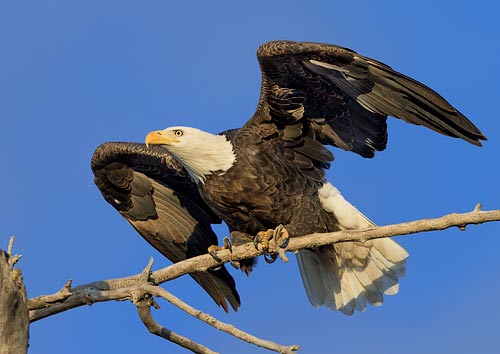
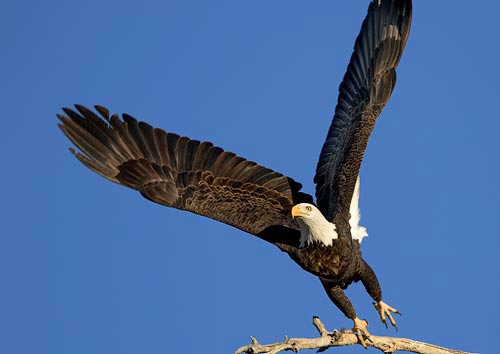
Our neighborhood bald eagles are here again this winter, often perching on their favorite tree.
I hope to get photos of them doing something other than just sitting there so I have to wait a long time for some action.
They will sit there for hours looking all serious and then suddenly launch without much warning.
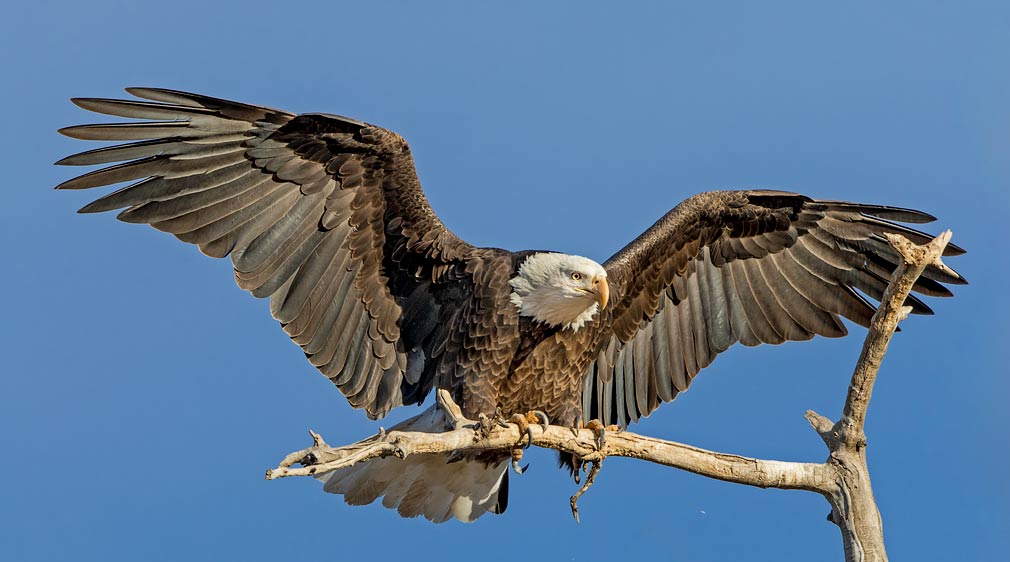
When one comes in for a landing, you really get to see their 6-7 foot wingspan.
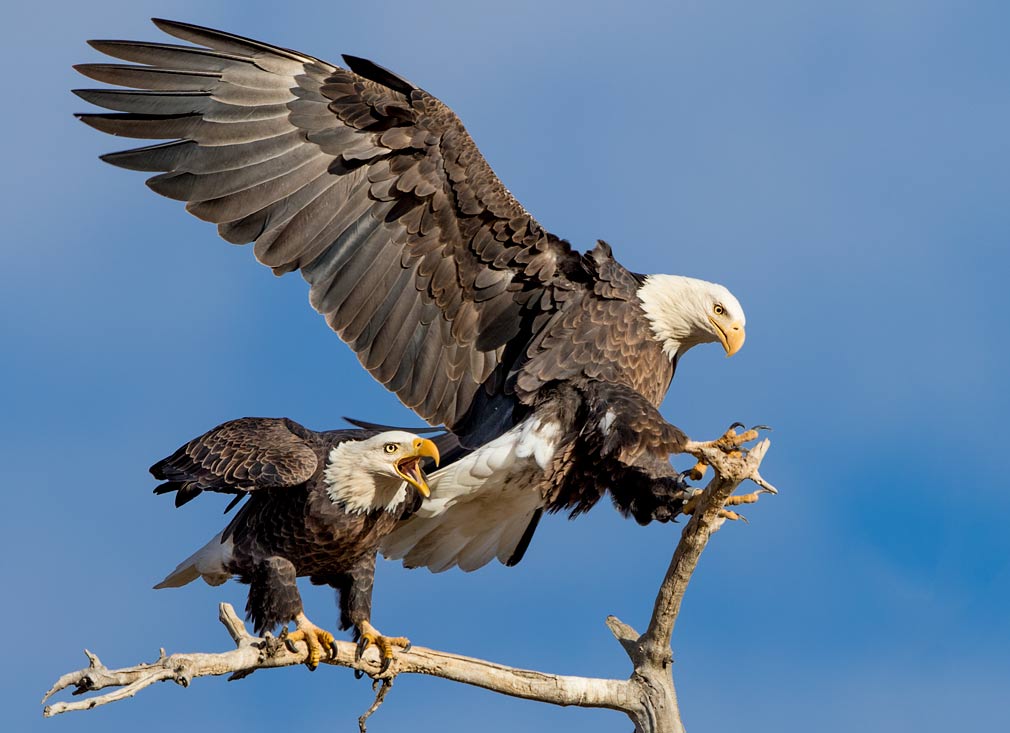
This day one eagle was already on the perch and they managed to avoid a crash.
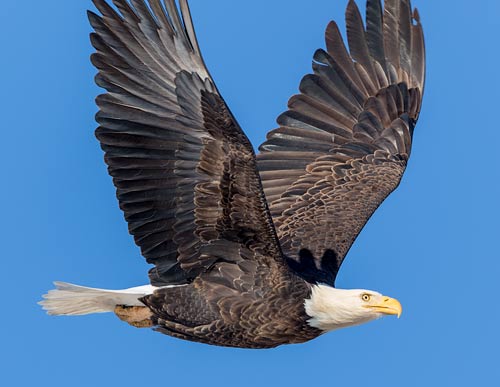
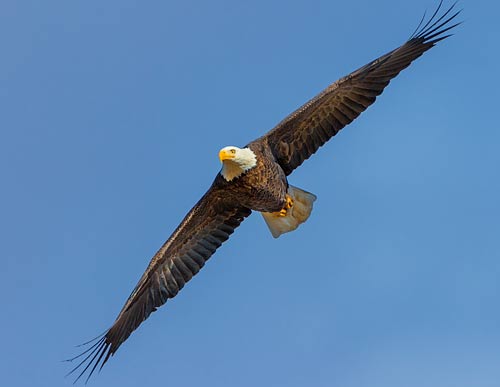
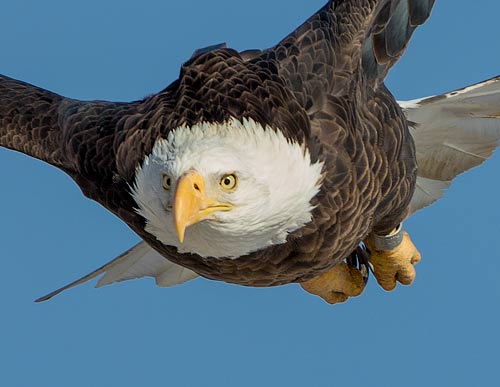
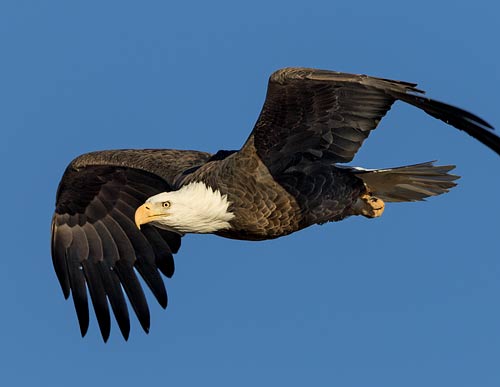

I find it fascinating to watch them in flight. Keeping the camera pointed at a flying bird is tricky.
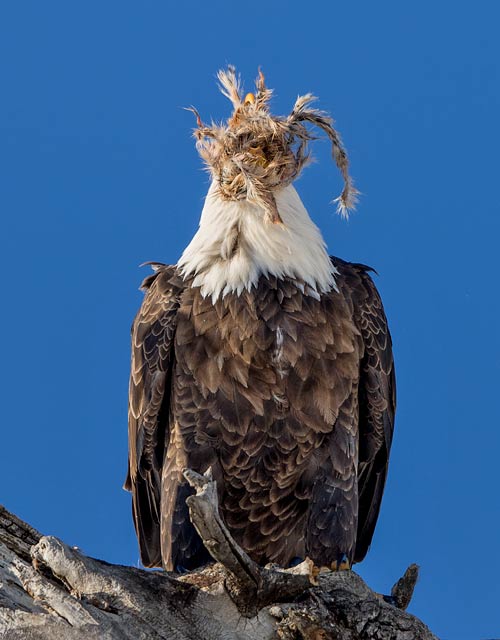
This eagle was dining on an unfortunate prairie dog.
After eating most of it, the eagle tried to swallow the whole remaining carcass.
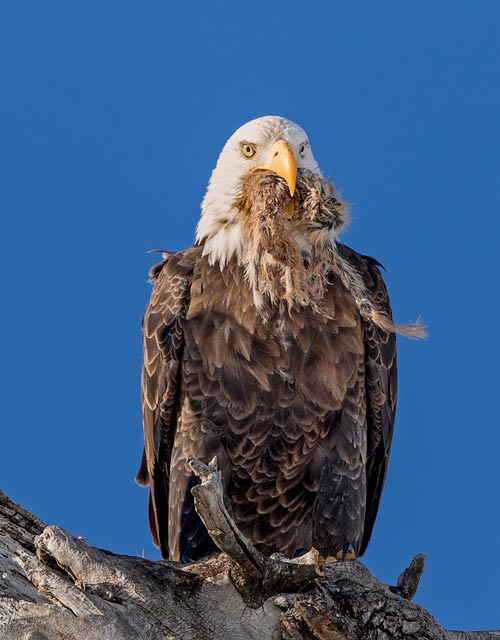
Well that didn't work.

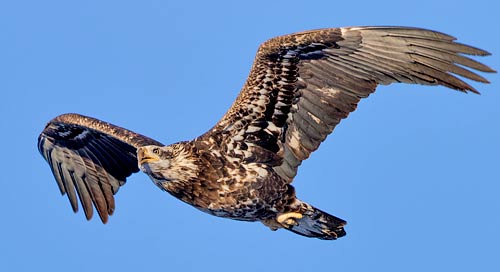
Several immature eagles flew past showing their mottled plumage.
I believe the right one is older because its beak has changed from black to yellow.
Northern Harrier
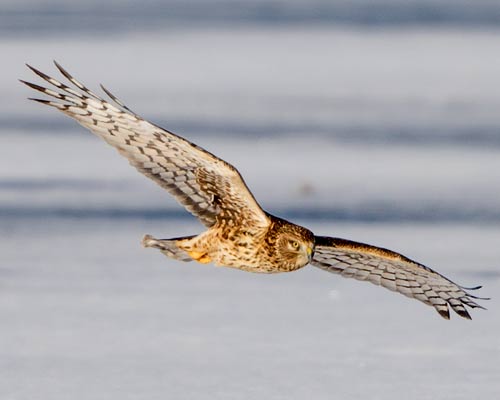
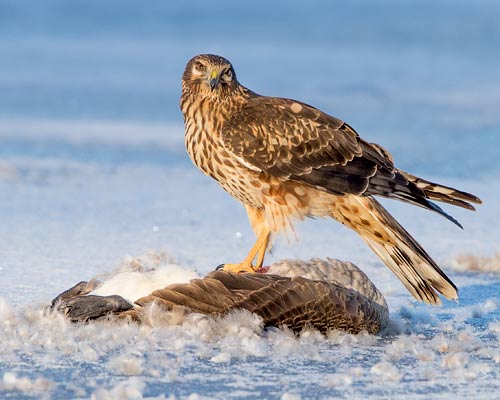
This northern harrier flew in to dine on a goose carcass lying on a frozen lake.
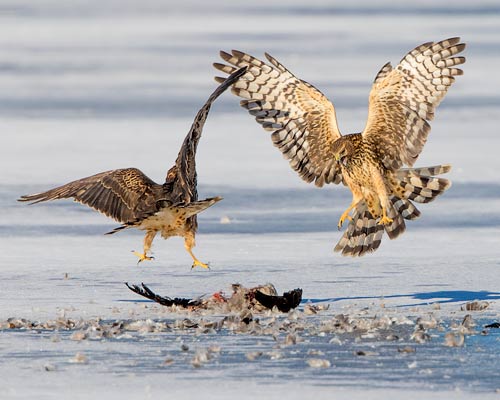
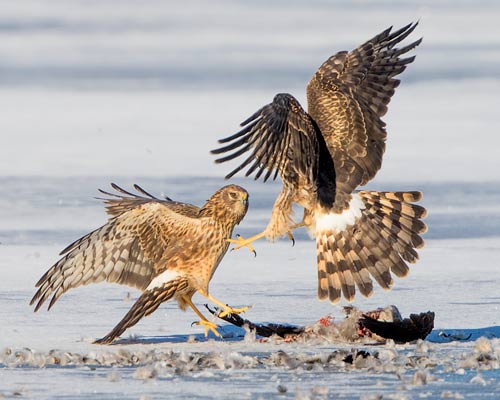
Later on, a second harrier came in and they had a squabble.
Screech Owls
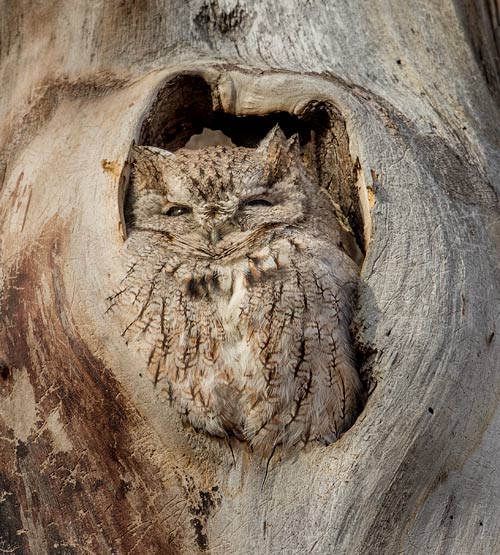

This screech owl picked a roosting site that seems like it was cut out to match its shape.
Sometimes two owls snoozed together in the same tree.
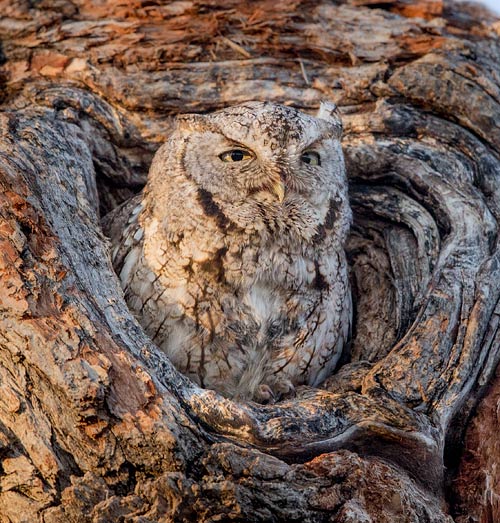
At dawn this owl was just about to go to sleep.

A rufous-morph screech owl like this is uncommon around here.
Great Horned Owls
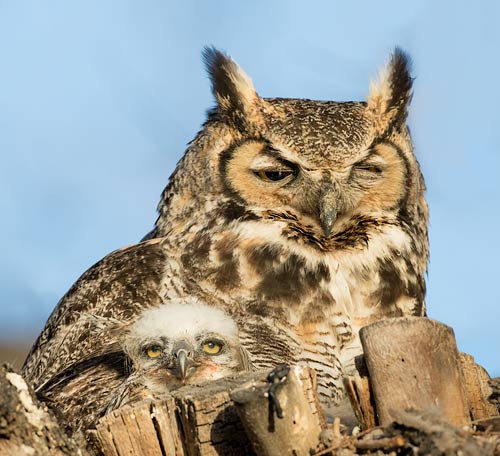
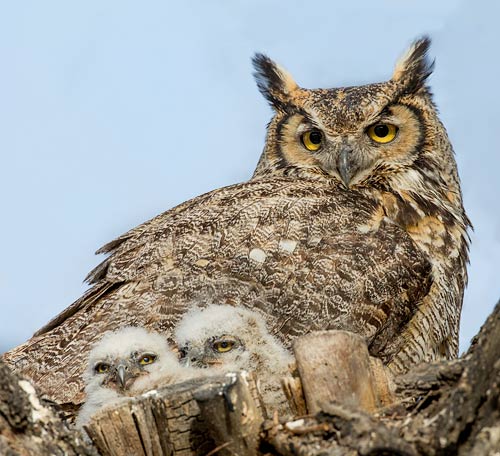
I was watching and hoping great horned owls would return to their favorite nest tree again this year.
In March I saw the top of an owl's head peering over the edge as she was incubating eggs.
Three weeks later, I saw one fuzzy white little head peeking out from under her feathers as she snoozed.
The next day I saw two owlets. Turns out there were three.

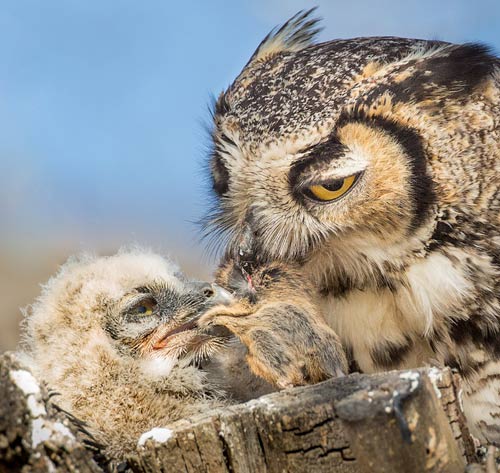
Mother owl always had an ample supply of bunny rabbit stashed in the nest.
She pulled off a tiny bit and fed it to one owlet.
Then she fed it a much bigger piece, with some fur.
The owlet worked on that for a while but managed to swallow it.
Owls don't have teeth so they pull food apart and swallow the pieces.

Very quickly the white fuzz is replaced by tan fuzz.
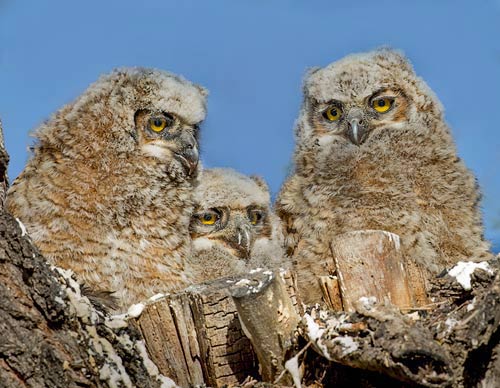
Just one week later, they have grown a lot and begun to develop their namesake ear tufts.
They spent a lot of time snoozing, waking up when Mama owl arrives.
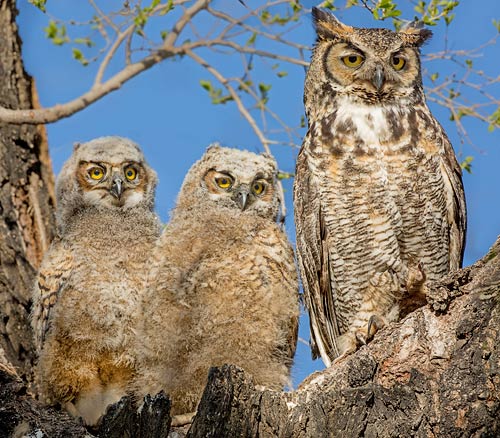
At least I got two owlets to look at me, albeit very briefly.

Hanging out with Mom is boring, apparently.
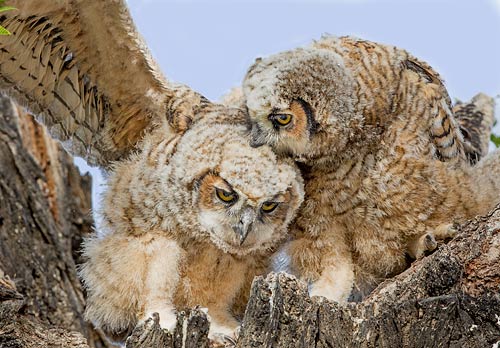
The owlets played around in the nest, testing their rapidly-growing wings and biting each other.
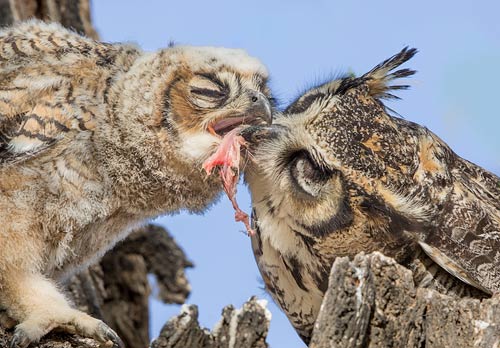
Mama still fed the owlets even though they had grown quite a bit.

Proud mother owl posed with her adorable owlet. She even seems to be smiling. Fittingly, this was on Mother's day.
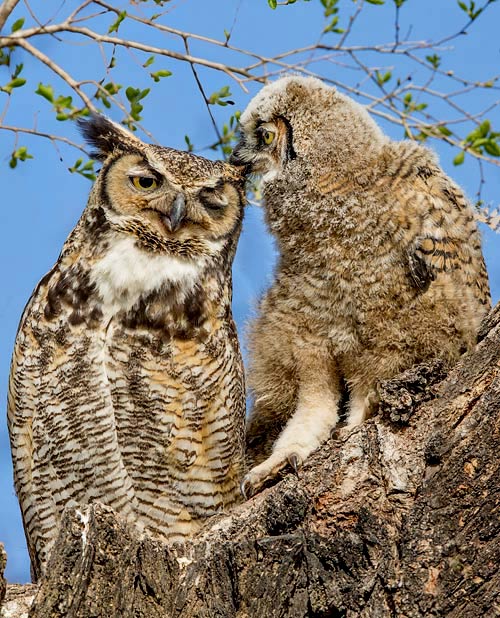
Then Junior bit Mama on her ear tuft. Owl moms have to put up with a lot of nonsense from their kids.
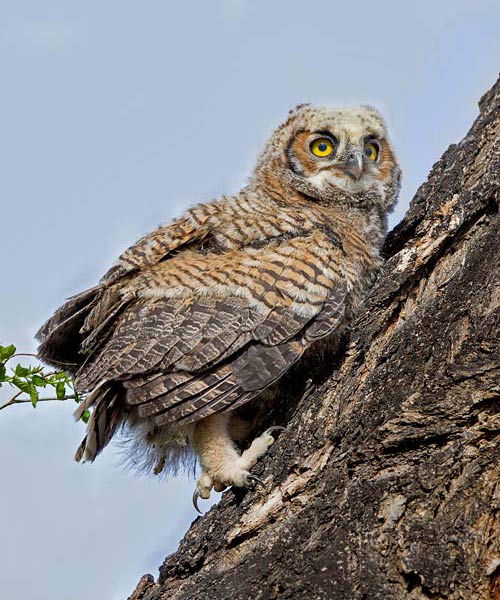
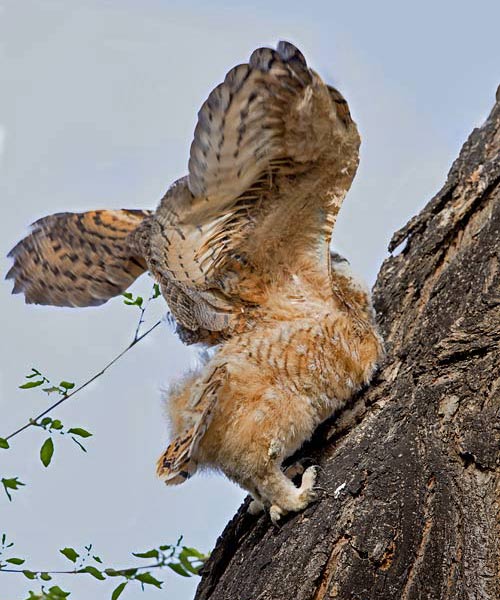
When an owlet decides to leave the nest, it just climbs out using its big gnarly feet to grab tree bark.
This is called "branching."
This one slowly climbed up this steep tree branch, sometimes fluttering its wings for stability but definitely not flying.
It found a flat spot left by a pruned branch and stopped there.
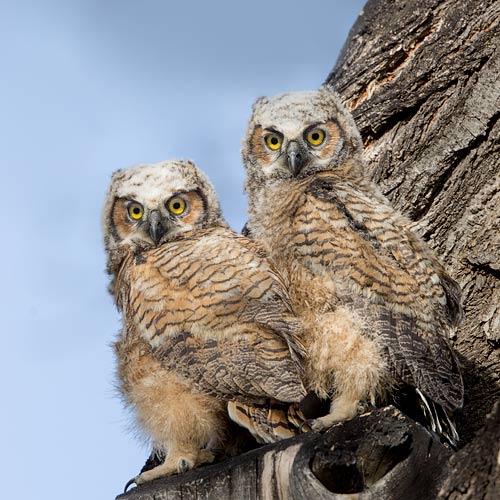
A few minutes later, a second owlet did the same thing, climbed up the branch and joined its sibling.
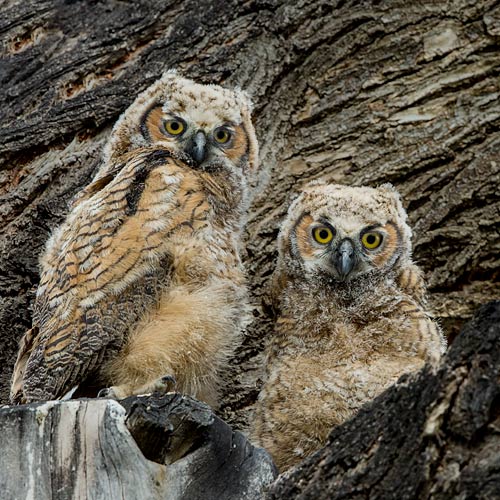
They were still on the same high perch the next day.
A different nest...

I was watching this big round hole for signs of owl activity, and had seen adult owls a few times.
In late April, I saw two little heads in the opening peeking out besides mother owl.
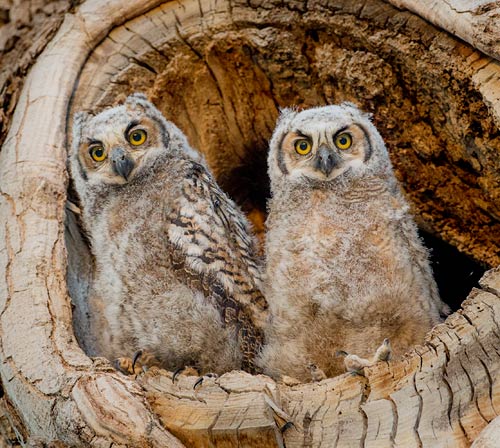
Ten days later, the two owlets were larger.
These two stood in the hole and did their funny roundy-round head motion,
which you can see in
this video.
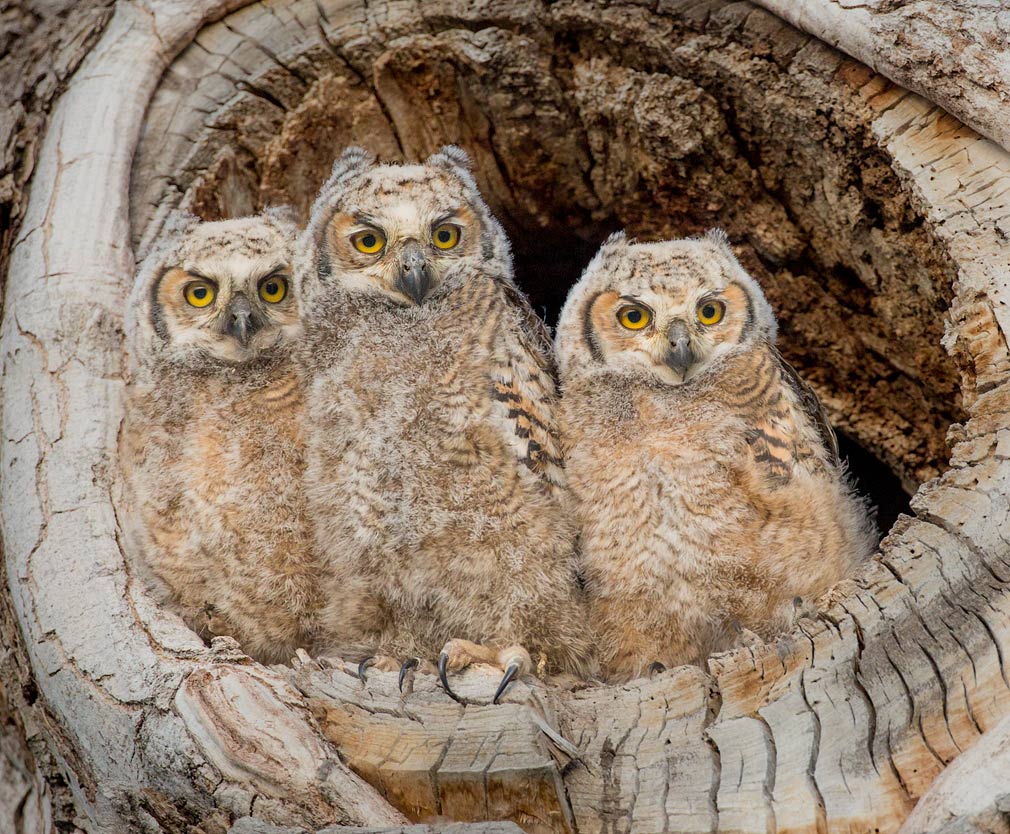
Turns out there were three owlets in the nest.
The third one was bashful and only came out after sunset as the evening light was fading.
Other owls...
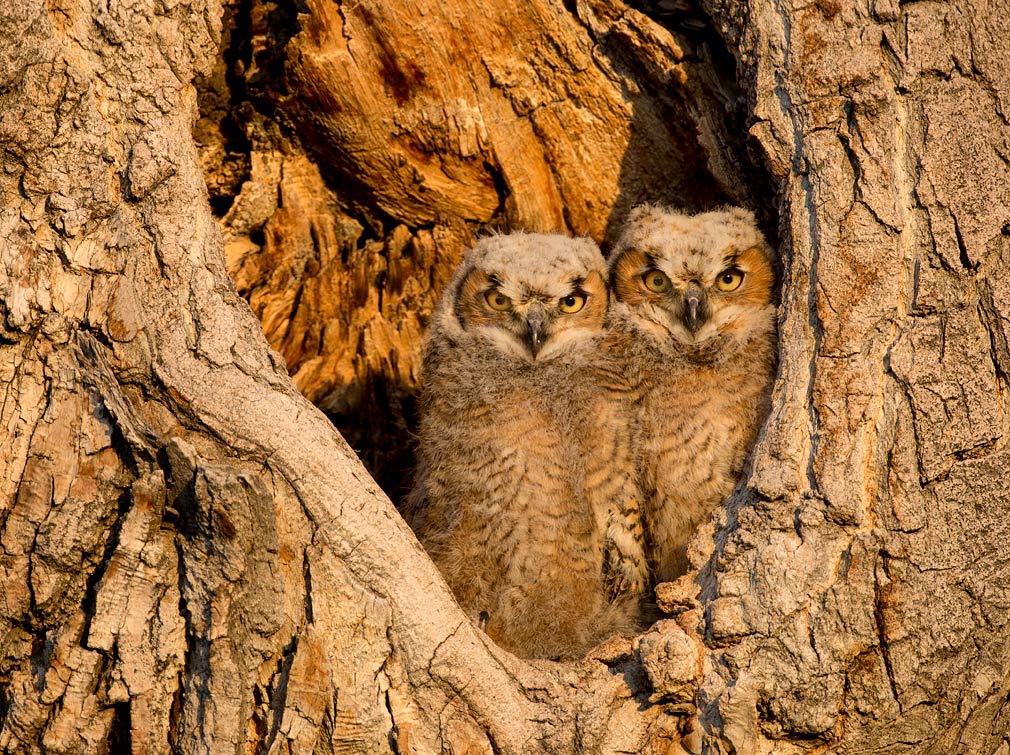
Sunrise found these two owlets in a very photogenic tree.
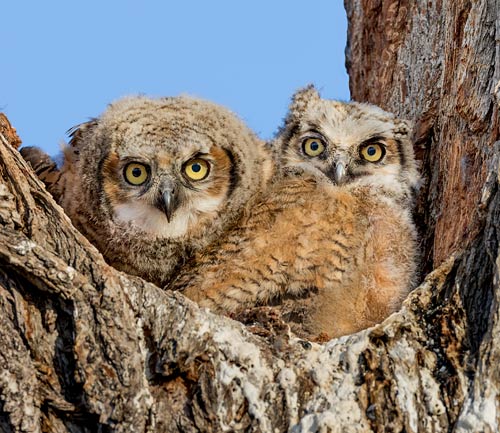
One of these siblings is significantly larger than the other.
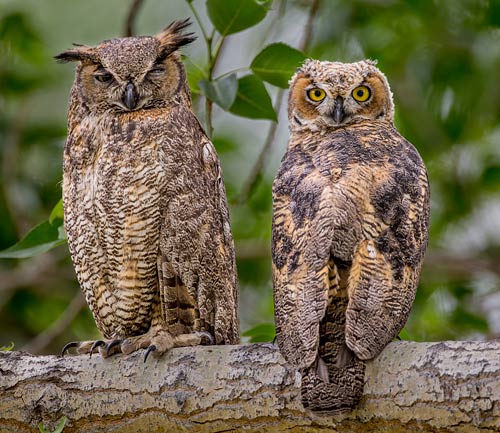
The young owlet is wide awake while the parent just wants to sleep.
Raccoon
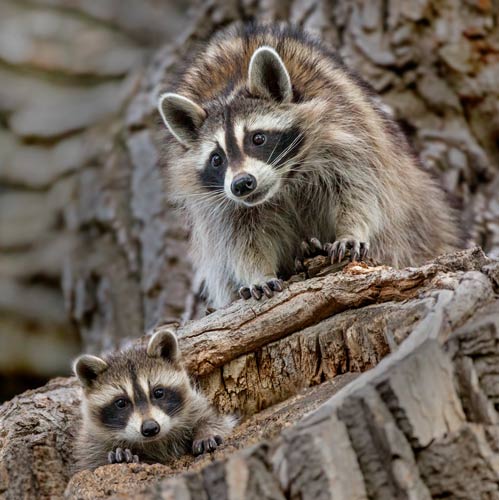
This raccoon family was living in the same tree as the owls, in a different hollow branch.
They only came out well after sunset.
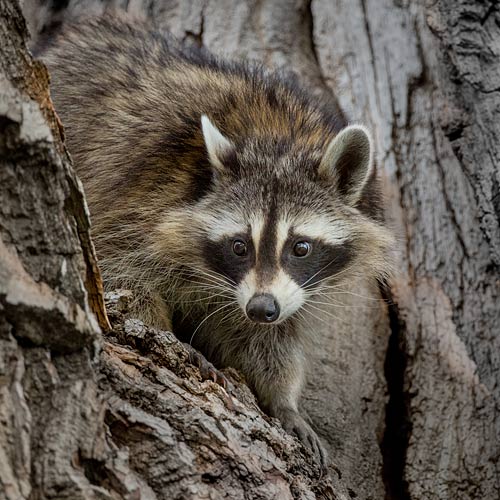
Mama raccoon slowly climbed down the tree, pausing between branches.
White Pelican
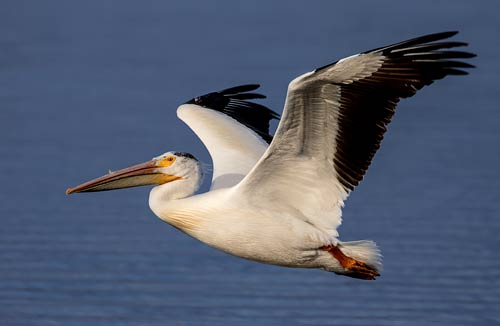
Pelicans are huge birds with a nine-foot wingspan and weighing about 15 pounds.
This pelican is coming in for a water landing.
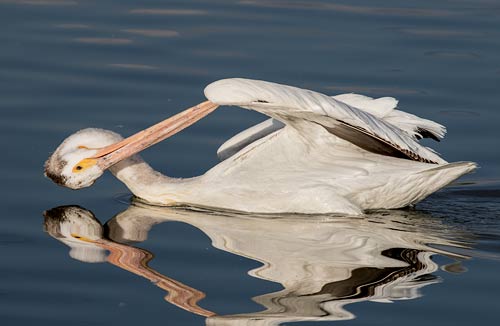
With that big long bill, the pelican must twist its neck around to preen.

This pelican glides across the serene water at sunset.
Elk Calves
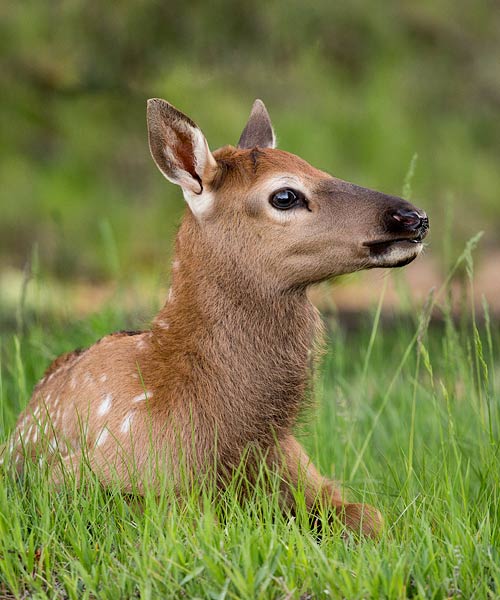
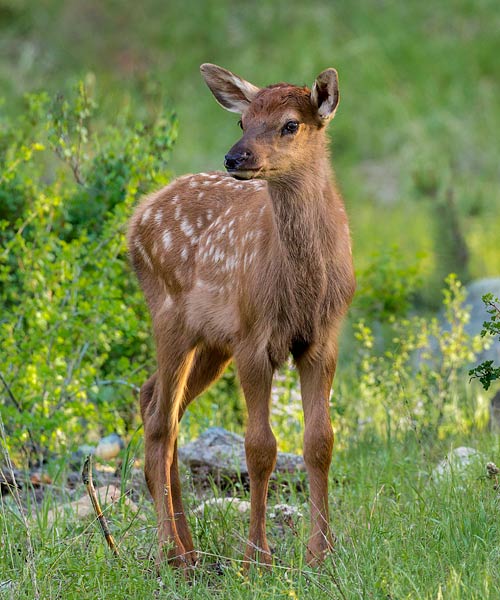
Elk calves are so stinking cute.
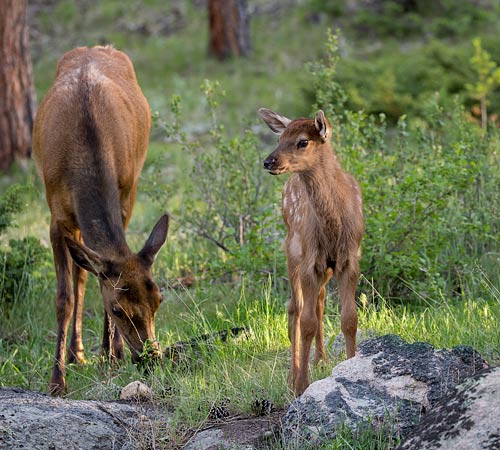
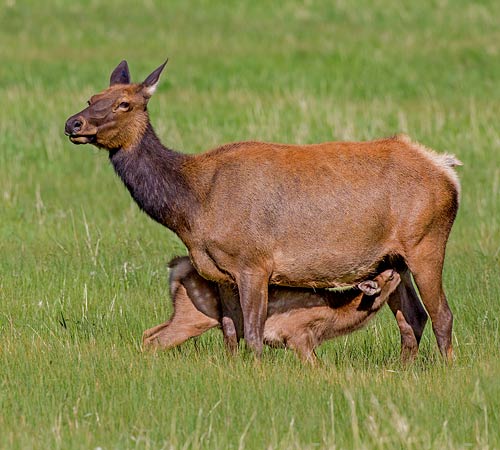
At first the calves are hidden under bushes while the cows graze.
Later on, the calves are more active and run with the herd but still stay close to their mothers, frequently stopping for a snack.
Red-Naped Sapsucker
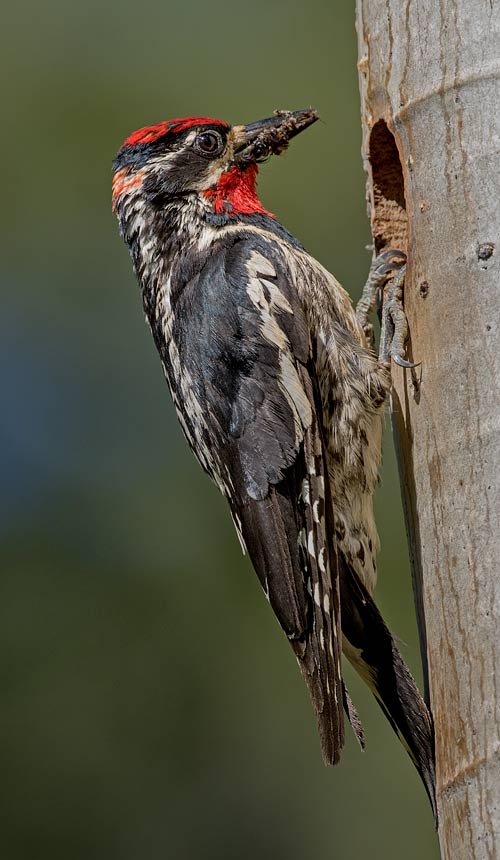
A red-naped sapsucker is a medium-sized woodpecker that makes its nest in a tree cavity.
After the eggs hatch, both parents make frequent trips to bring beakfuls of juicy bugs to hungry chicks.
They don't spend a lot of time waiting around and posing for photos, let me tell you.
Occasionally a parent will go into the hole for some housecleaning and bring out a mouthful of detritus.
Moose
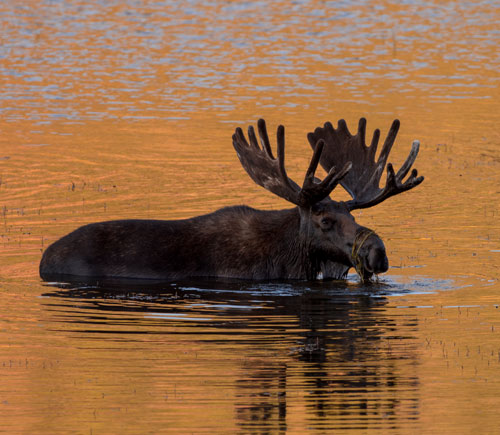
A bull moose silhouetted at dawn.

That deeper grass must be better than the shallow stuff.
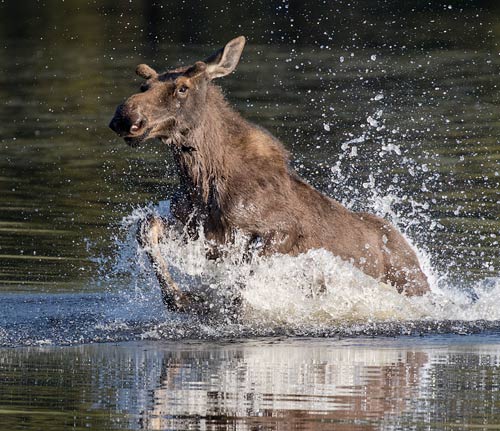
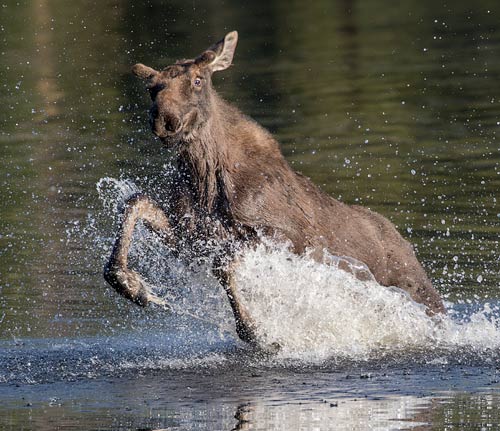
This yearling bull moose was slowly trudging across shallow Sprague Lake when suddenly he started frolicking
and splashing in the water, just like a kid.
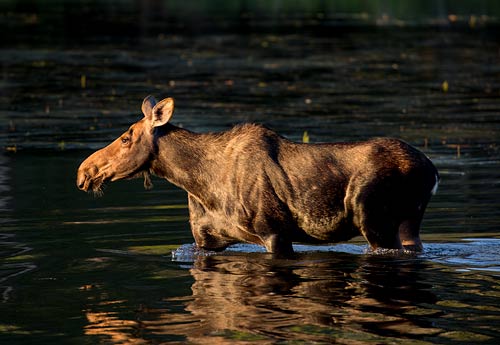
This cow moose was dining on underwater grass at dawn.
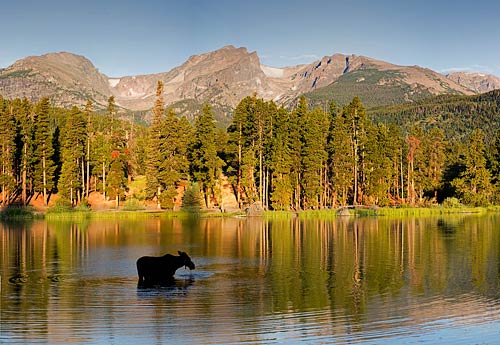
This is a spectacular view, with or without a moose.
Big Boy Locomotive
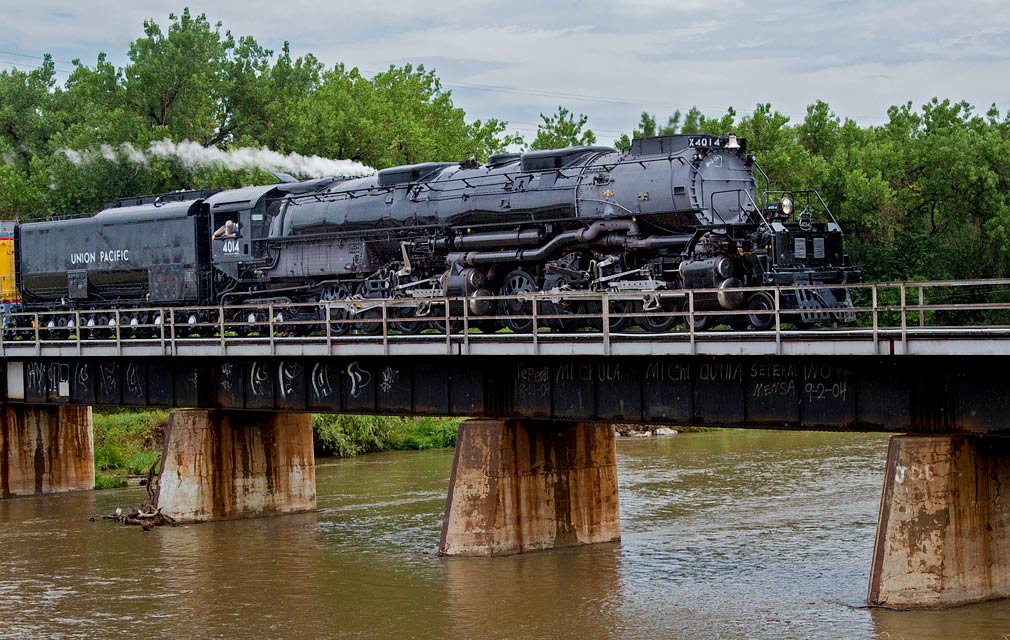
I know it's not wildlife, but it is a beast.
I had to go see this huge steam locomotive as it passed through Greeley, I mean who doesn't like trains?
This Big Boy is the largest operational steam engine in the world.
Here it is crossing the South Platte River near Evans, CO.
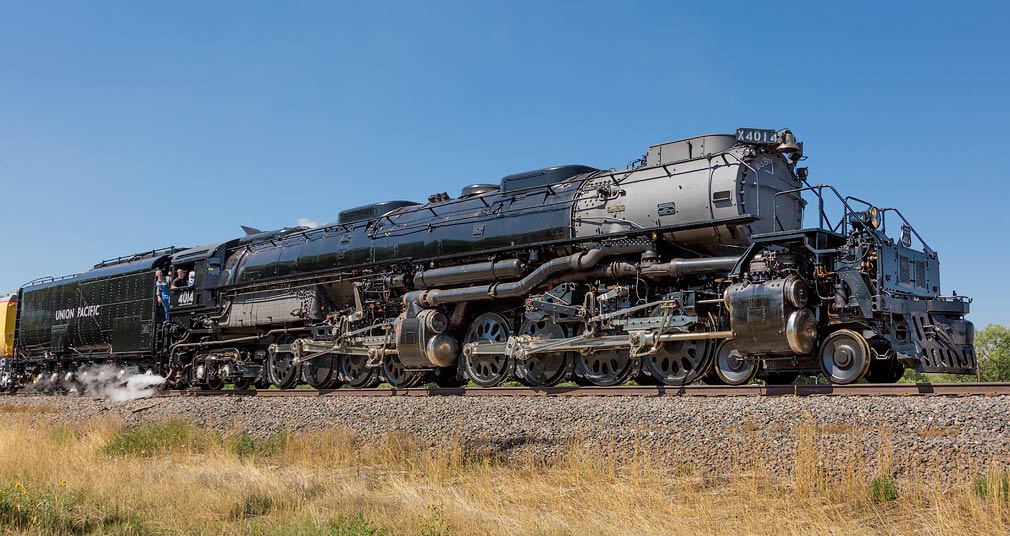
This time it is heading back north to Cheyenne.
Elk Rut
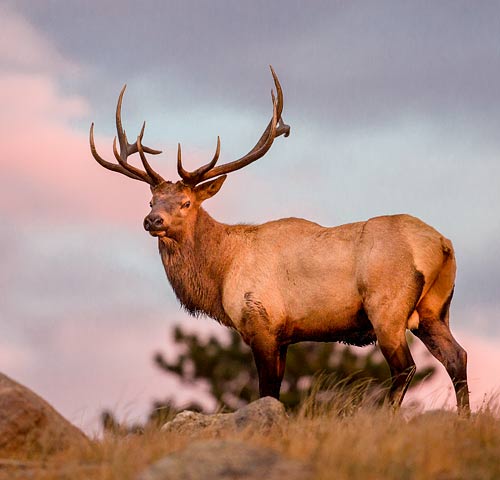
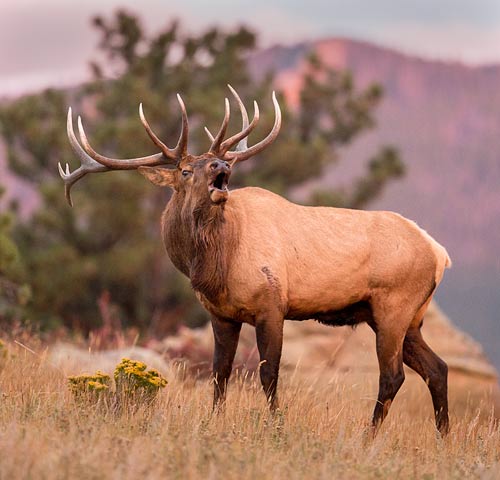
September is when the bull elk gather harems for the rut. This bull was up on a hill before dawn, bugling mightily.
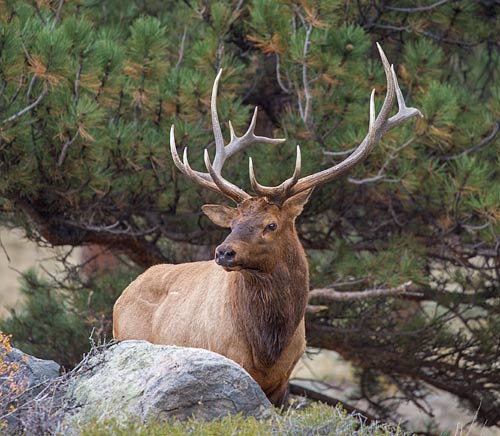
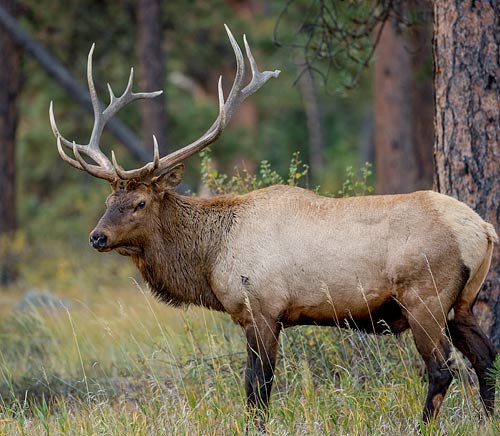
He was a big bull, 6x7, with that unusual 7th point on his right antler.
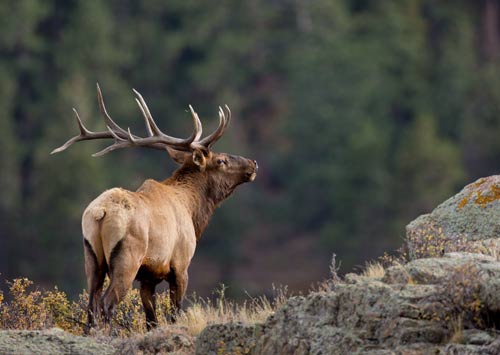
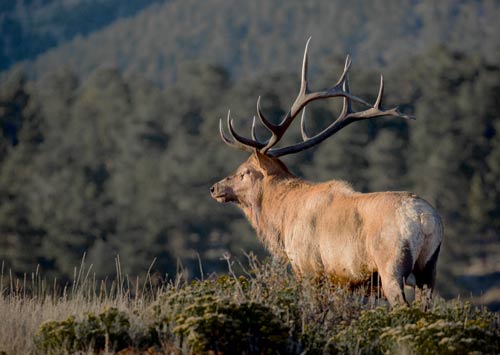
Sometimes the bull just stares into space. What could he be thinking about?
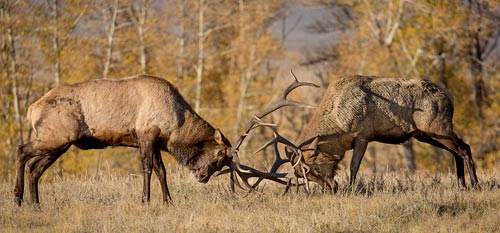
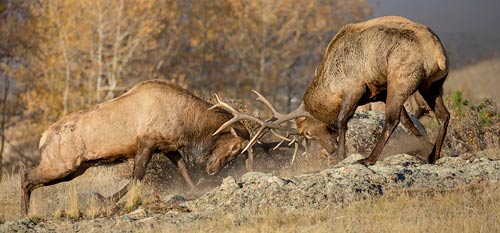
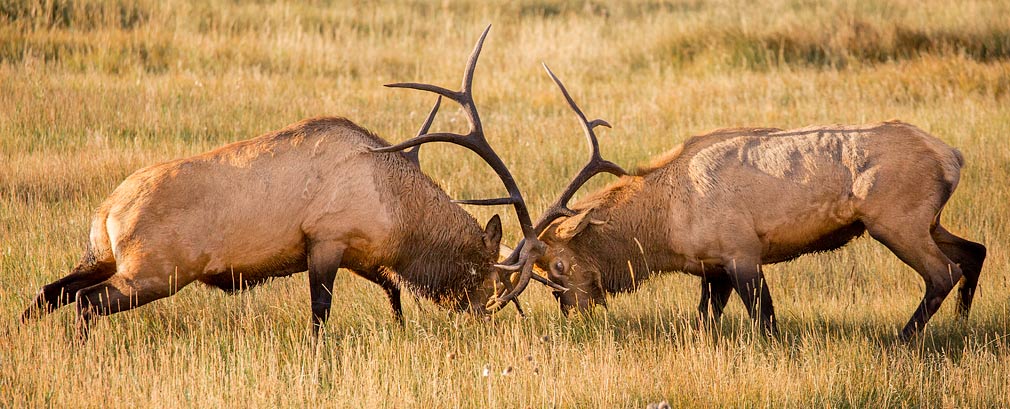
Usually a larger bull can rebuff a smaller one just by bluffing.
When the bulls are equal sized and bluffing doesn't work, the two bulls actually fight.
They engage their antlers, then push and shove each other, kicking up grass and dirt.
Still photos don't really convey the intensity of the vigorous commotion.
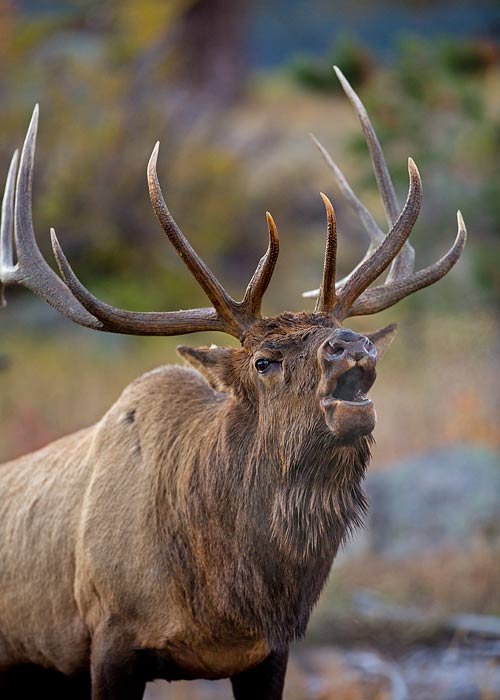
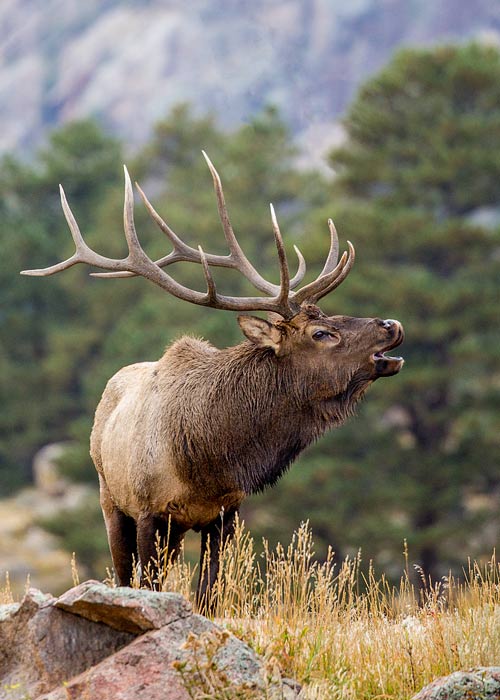
Elk bugle frequently during the rut, and it is very loud.
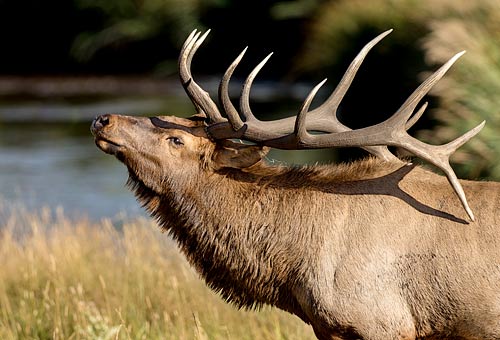
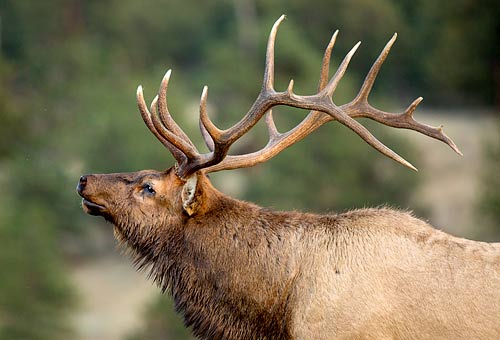
Bulls raise their noses to try to show off their antlers.
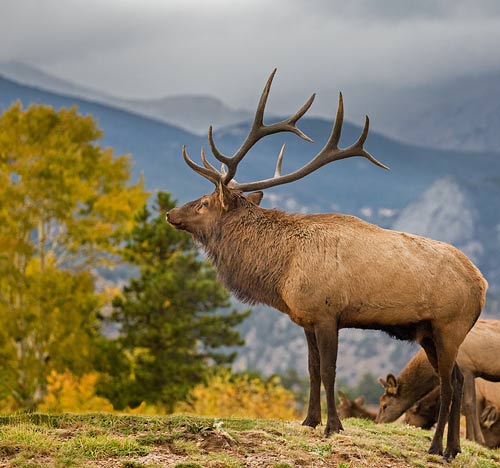
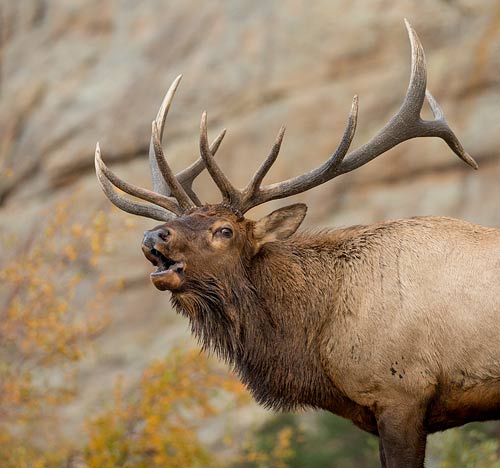
This big fellow hung out in town beside condo buildings.
The residents might not appreciate this noisy bugling ruckus going on all night.
Black Bear

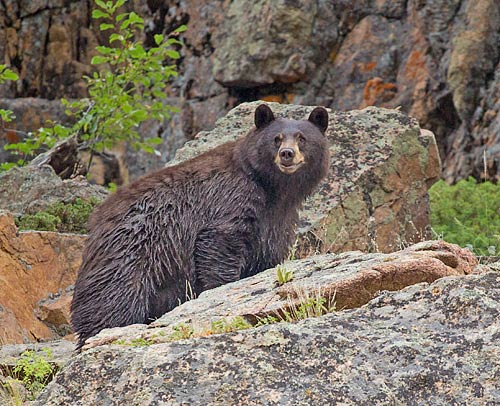
I was slowly driving along the Endovalley road when suddenly this bear came
out of the willows, ran across the road right in front of me, and headed up the cliff.
By the time I picked my jaw off the ground and grabbed my camera, it was already far up on the hillside.
I would have liked to have used my longer lens but this bear was definitely on the move
so these photos were quickly taken with a shorter lens and cropped quite a bit.
I only got to see it for 15 seconds before it crested the hill and disappeared.
Fortunately for me, it paused briefly to gaze sideways which 'bear-ly' gave me an opportunity to see its face.
It is a rare treat to see a bear at all.
Wood Duck
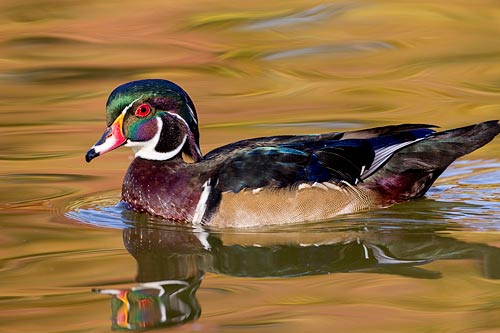
The resplendent wood duck drake with his colorful iridescent plumage is even more appealing with autumn color reflecting on the water.

Occasionally he raised up and flapped his wings.
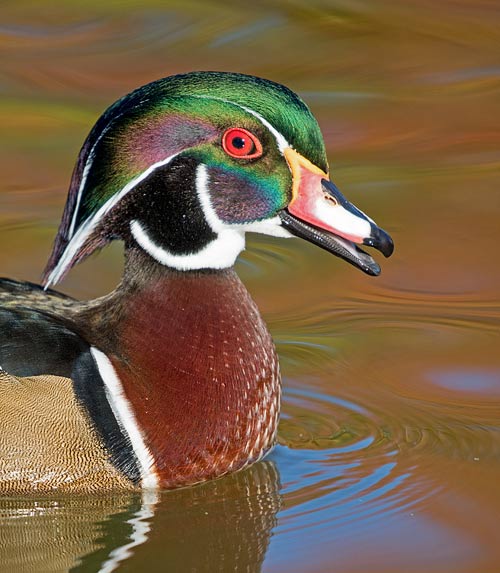
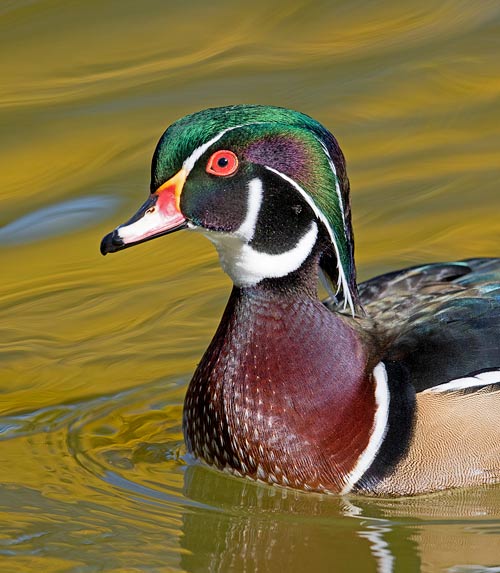
Sometimes one paddles up close enough for portraits.






















































